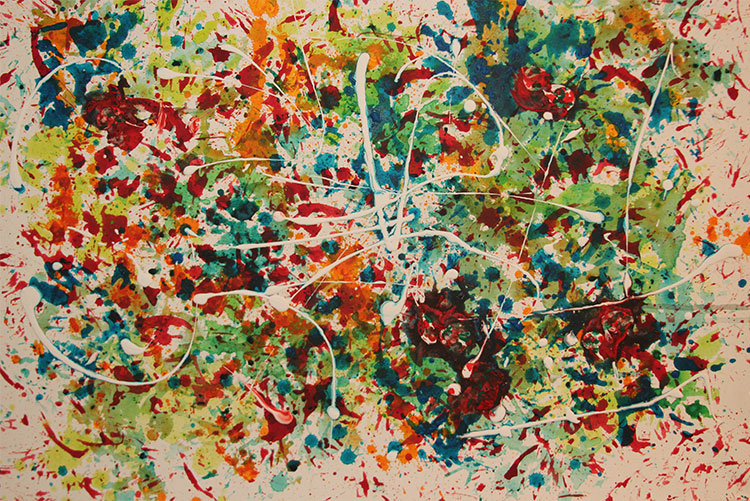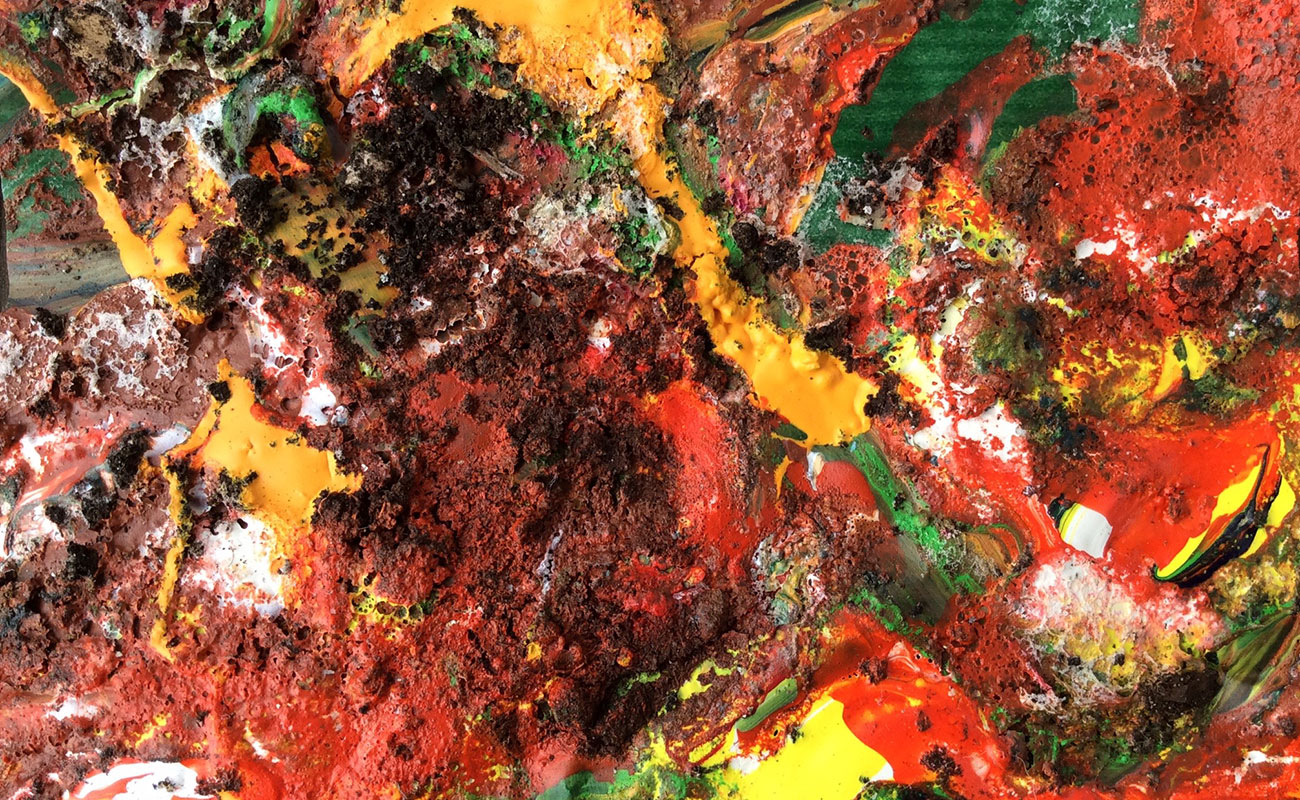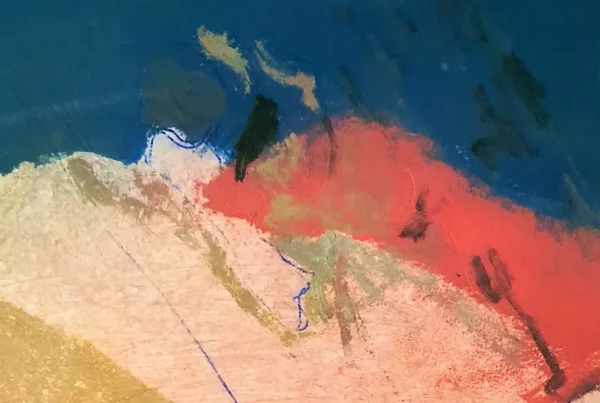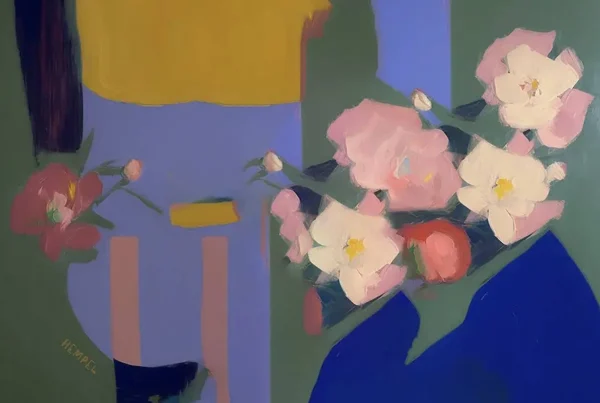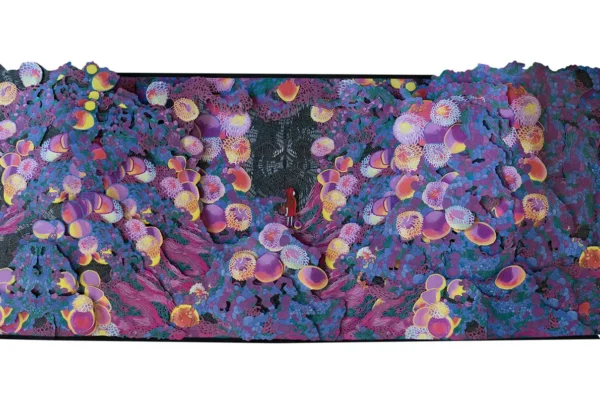“My paintings signify my entire life, a mixture of many aspects and shades of feelings.”
Asper Coolan’s Unconventional Techniques: From Dripping Paint to Woven Carpets
Asper Coolan, an artistic pseudonym, is derived from the combination of the artist’s real first and last name, as well as their maiden name. This creative alias allows Coolan to maintain a sense of freedom and distance from their true identity.
Hailing from Germany, Coolan currently resides near the vibrant city of Cologne, situated on the picturesque River Rhine. The liberal atmosphere of this urban setting enables the artist to achieve the optimal flow and transcend the mundane concerns of daily life, fully immersing themselves in the realm of shapes and colors. Although originally from the scenic Lake Constance region in southern Germany, near Austria and Switzerland, Coolan has come to appreciate the unique benefits and opportunities that a bustling city like Cologne has to offer.
In the early stages of their artistic journey, Coolan’s father astutely observed that the emerging artist’s initial works bore striking resemblances to those of abstract expressionists, such as Jackson Pollock. Years later, this observation would serve as a catalyst for Coolan’s renewed interest in and exploration of abstract painting, inspiring them to delve deeper into the intricacies of this vibrant art form.
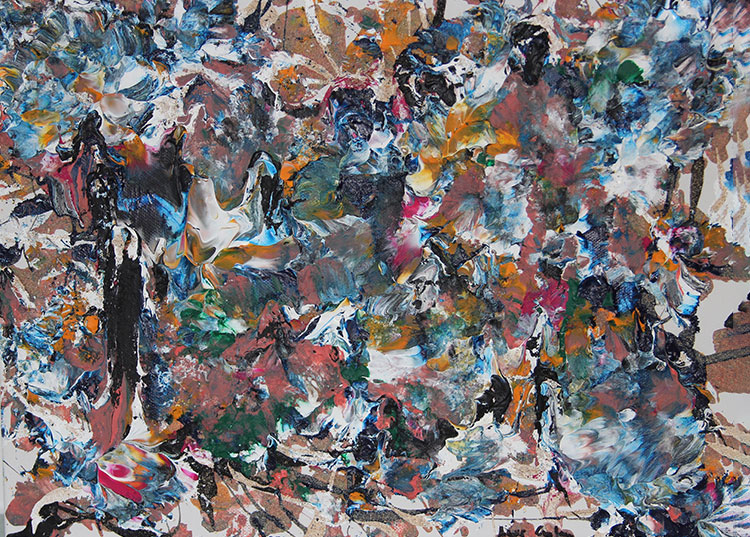
The Colorful World of Asper Coolan: How She Crafts Her Masterpieces
Asper Coolan is a self-taught artist, and skillfully employs abstract techniques such as allowing colors to drip from a spoon onto a canvas positioned on the floor. This process prioritizes intuitive action over the pursuit of perfection. In the early stages of her artistic journey, Coolan faced challenges, often producing lackluster canvases and unintentionally decorating the surrounding walls with paint.
Over time, the artist expanded and refined her experimental techniques, discovering and inventing alternative methods of creating paintings. One such approach involves pressing colored cloth onto the canvas, which, once dried and removed, reveals an array of intricate patterns. Another technique Coolan employs is pressing the canvas onto various color spots, producing a unique composition. It is no surprise that Coolan envisions undertaking an ambitious project, such as a large-scale painting or wallpaper installation, in the future.
In addition to the countless hours Coolan dedicates to mixing colors and crafting her masterpieces in the studio, she continually seeks out new materials and sources of inspiration in her surroundings. The artist’s unwavering curiosity and dedication to her craft contribute to her ever-evolving and captivating body of work.
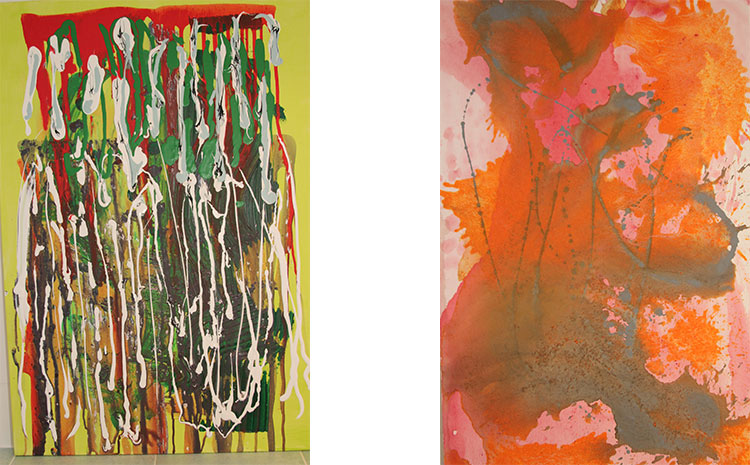
Asper Coolan’s Artistic Process: A Reflection of Her Life and Inner World
The history of art, spanning from its inception to contemporary installations and projects, never ceases to captivate and intrigue. Delving into the lives and circumstances of painters offers invaluable insights into the times in which they lived and the ways their experiences influenced their work. Recently, a television documentary on Caravaggio, the 17th-century painter, detailed the discovery of an ancient painting in a French attic, a fascinating tale of validation, auctions, and prices.
In today’s digital age, emerging artists from across the globe continue to create captivating works, providing an ever-expanding wealth of inspiration and discovery. Oftentimes, a day seems insufficient to fully explore the myriad facets of this ever-evolving field.
Coolan’s creative process frequently commences with the selection of an appropriate canvas and the establishment of a foundational painting surface, typically achieved through the application of a light, watery layer using a sponge. Subsequently, she carefully selects and mixes colors, experimenting with various combinations on paper before committing to the canvas. Since her paintings often incorporate a multitude of colors, it is crucial to ensure harmony and balance are maintained.
Allowing each layer to dry for at least a day, or sometimes longer, is essential before proceeding with the next. Coolan prefers utilizing spatulas over brushes for the application of thick layers of color or paste-like substances. Once this is done, she introduces a motif that complements the existing color palette. A prime example of this approach is her painting depicting the Cologne Cathedral reflected in the River Rhine. Collaborating with a friend, Coolan transformed the painting into a woven carpet, an experience she found both exhilarating and rewarding.
For the artist, connections to other fields and disciplines are vital. She believes that art can manifest in myriad forms, from the arrangement of furniture and flowers to the pairing of colors and the creative visions of fashion designers.
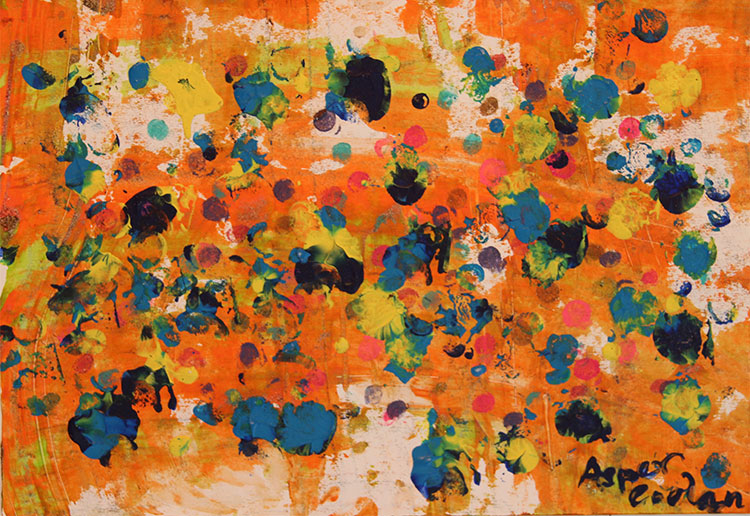
Insights from Asper Coolan
The creative process of Asper Coolan can be perceived as a reflection of her life, encompassing a diverse array of emotions, experiences, and unexpected turns. Although her work may not always follow a clear direction, it consistently exudes vigor and vitality. The artist’s pursuit of structure and a satisfying approach is mirrored in her attempt to manage her vivid inner world. Through her paintings, Coolan’s soul and heart are tangibly represented.
To gain a deeper understanding of artists and their works, Coolan recommends the book “Bildbefragungen: 100 Masterpieces in Detail” by Rose-Marie and Rainer Hagen (www.taschen.com/books/art). Exploring the motivations and techniques behind masterpieces can provide valuable insights into one’s artistic journey. Discovering one’s style may take time and evolve throughout an artist’s career, requiring patience and perseverance.
Coolan advises emerging artists to study various paintings and explore other artistic disciplines, such as Bauhaus architecture. Drawing from her own experience, she suggests experimenting with photography to develop a keen sense of composition, scale, and dimension in visual art. This knowledge can prove invaluable in determining the optimal placement of motifs and their relationship to surrounding elements within a piece.
